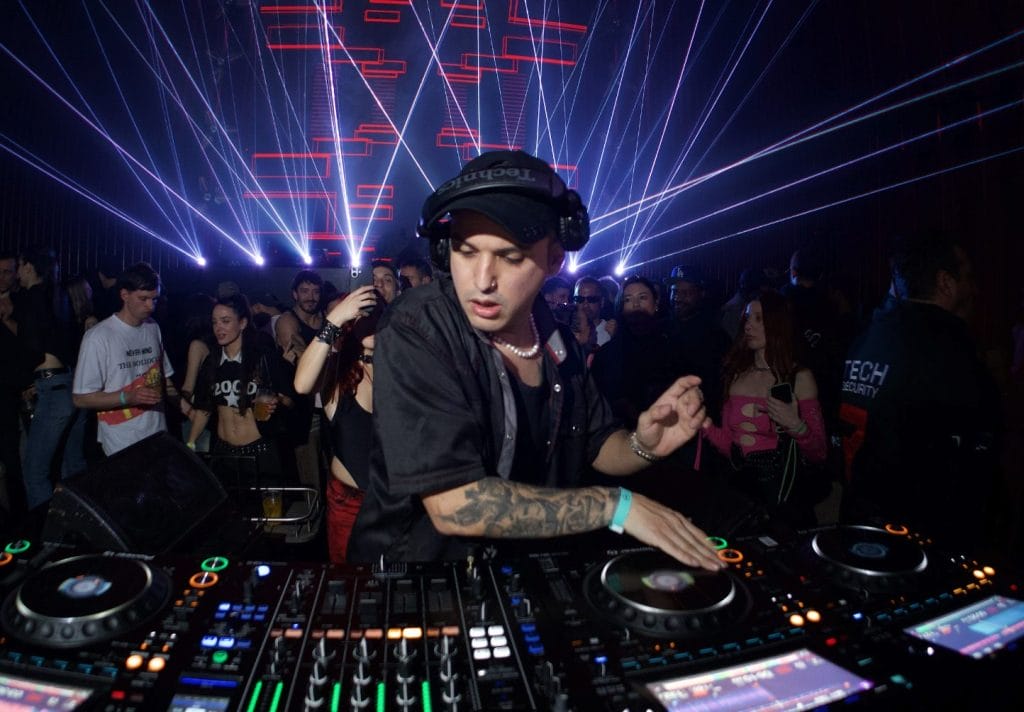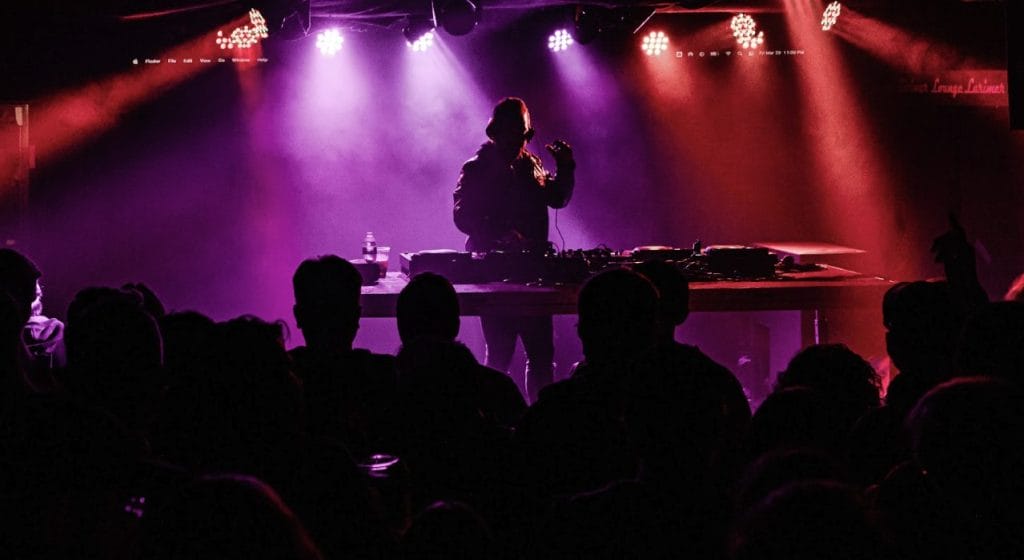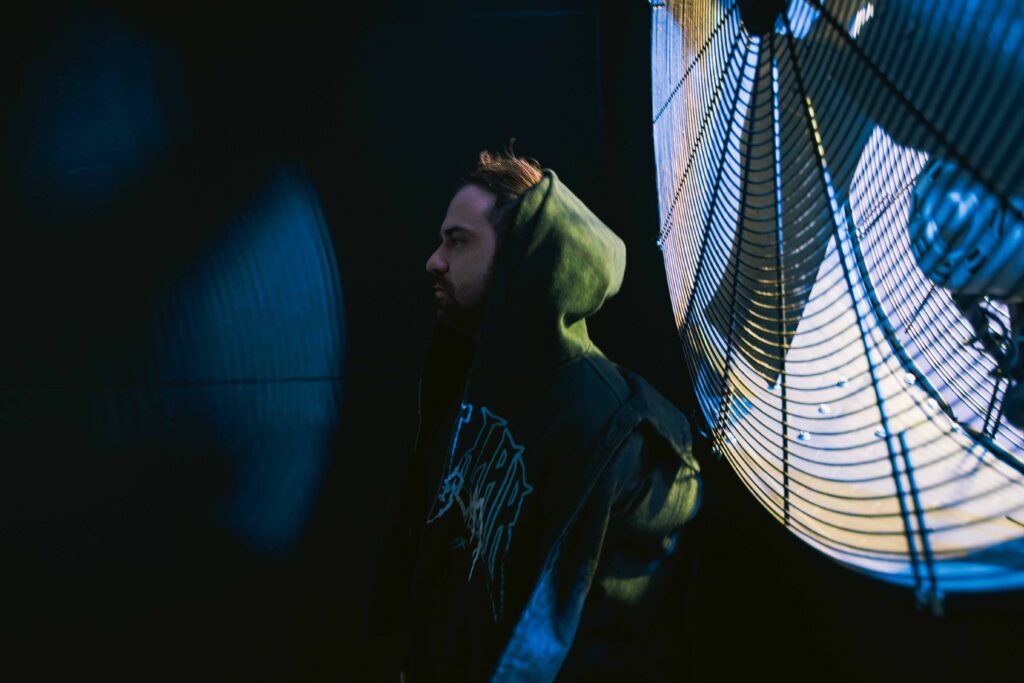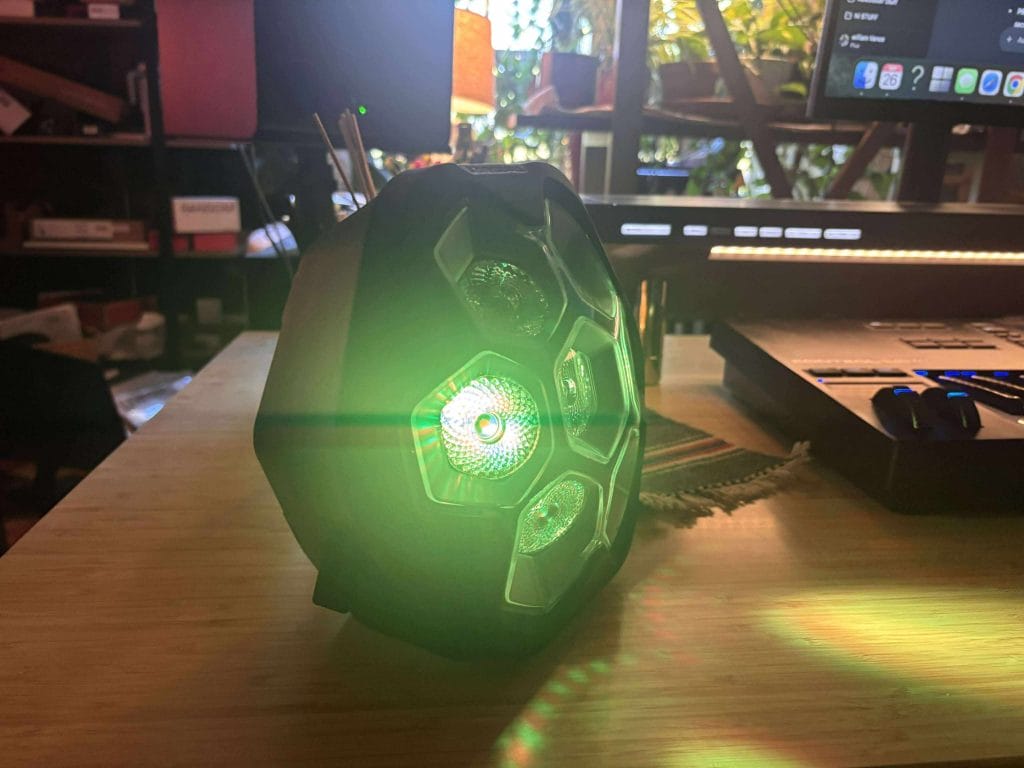Table of Contents
Anyone who has ever thrown a party or renegade rave knows that lighting has always been tricky. You either settle for cheap LED strips that barely change the atmosphere, or you go down the rabbit hole of DJ and stage lights with complicated DMX setups, heavy tripods, and a steep learning curve. The SOUNDBOKS Lightboks aims to land right in the middle. It’s designed to give you professional-level light output without the technical hassle, all in a portable and rugged package that can survive the chaos of real-world events.
At $299, this isn’t a budget impulse buy. It’s a serious accessory built for people who host parties, throw outdoor events, or simply want their space to feel alive when the music kicks in.
I’ve been testing the Lightboks for weeks now, indoors and outdoors, in small living room setups, at family gatherings, and in larger backyard environments. What surprised me most is how quickly it shifted from being a “nice add-on” to feeling like an essential piece of gear whenever I wanted a party atmosphere.
This review will walk through the build, setup, performance, and day-to-day usability of the Lightboks. I’ll cover the strengths, the areas where it falls short, and ultimately who I think it’s best suited for.
Design and Build Quality
The first thing that really knocked my socks off is the design. The hexagonal body and hexagonal LED spots give it a modern, almost industrial look. It doesn’t feel like a toy, which matters when you’re dropping this much cash for a portable, renegade-party-style rave light. At about 8 x 9 x 5 inches and weighing 3.8 pounds, it has enough heft to feel substantial while still being easy to carry around. The built-in handle adds real convenience. I found myself moving it between rooms, taking it outside, and even packing it into my car without thinking twice.
Durability is clearly a priority and SOUNDBOKS, by this point in the game, knows its audience quite well and the product is all the better for it. The plastic housing feels dense and strong, the silicone bumpers protect the corners, and the transparent cover gives the LEDs a clean finish. Nothing about it rattles or feels fragile. I’ve had other consumer-grade lights that you feel nervous putting anywhere near kids or rowdy friends.
The Lightboks is the opposite — I didn’t worry about drops, bumps, or it getting knocked over during a party.
The IP65 rating is another confidence booster. I’ve used it outdoors in misty rain and around a pool without hesitation. Dust, moisture, and unexpected spills don’t faze it. That matters more than you’d think. Anyone who has thrown a party knows accidents are inevitable, and with this build, the Lightboks is clearly designed for those environments.
Overall, it’s one of the most rugged consumer lights I’ve used, and it feels premium compared to the countless generic party lights flooding the market, and it definitely checked a lot of boxes for what it’s trying to accomplish.
Setup and Box Contents
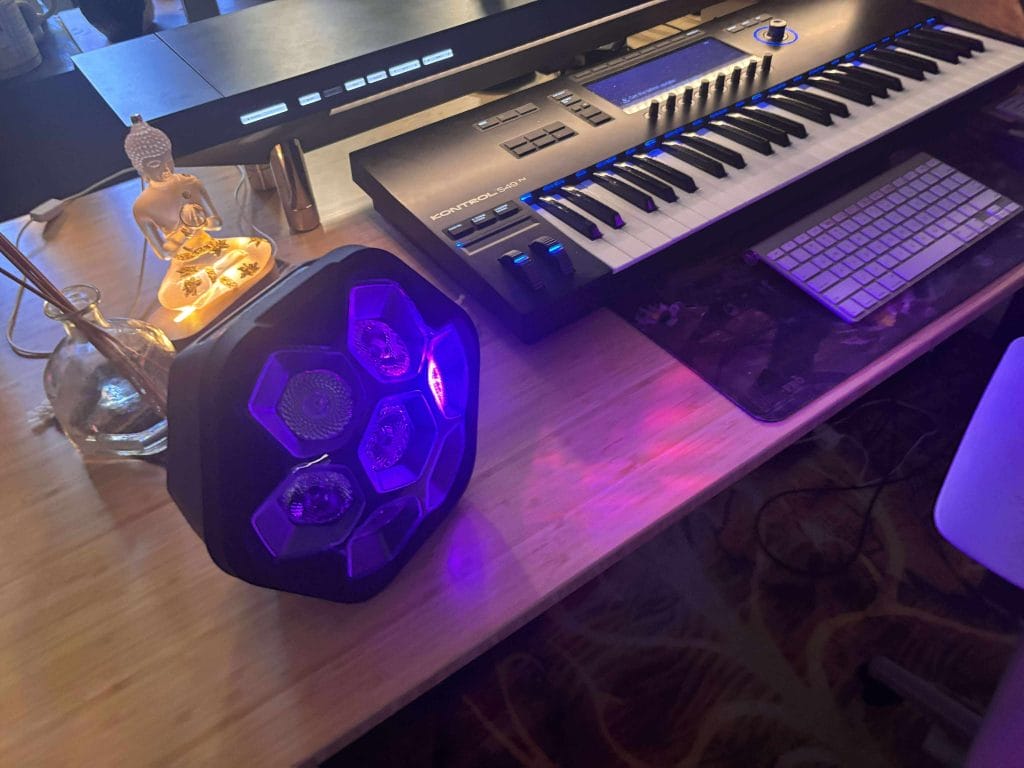
Out of the box, the setup couldn’t be easier. Inside you get the Lightboks unit itself, a USB-C charging cable, and documentation. One gripe: for $299, I think a proper charging brick should have been included. You’ll need your own, and while USB-C charging is common enough these days, it feels like a corner cut.
Once powered, it’s plug-and-play. There are no wires to run, no DMX addresses to set, and no confusing menus to navigate. On the top panel, you get a power button, brightness control, and mode selector. That’s it. Within seconds, you can have the Lightboks turned on and synced to your music.
The simplicity makes it approachable for anyone, even people with zero technical background. My kids were able to cycle through the modes and colors without needing instructions. At the same time, the Soundboks app opens the door to more detailed control. Pairing the Lightboks to the app was quick and seamless, and that’s where the real customization comes into play.
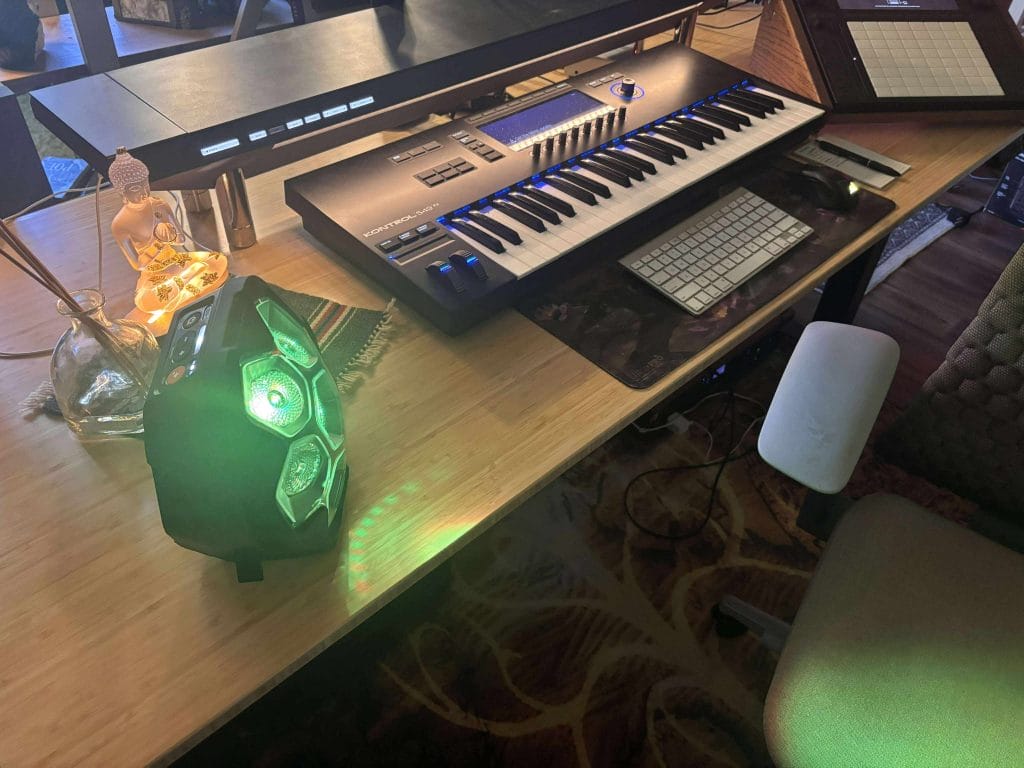
The app handles firmware updates too, which is an underrated feature. Most consumer lights become outdated within a year because the software is static. Knowing the Lightboks can be updated over time extends its value. My biggest comparison, and I understand that this is incredibly anecdotal, is that I wish you didn’t need an app, and even having a way to cycle through a number of presets or basic color palettes all without having to download ANOTHER app to my phone would be nice. This is not a new gripe from me at all, as almost any hardware that requires an app to get maximum functionality from is something I usually recommend against…
Lighting Performance and Modes
The main vibe, heart, and soul of this ligt is its lighting performance, go figure, and it delivers. The Lightboks houses seven RGBW 12W LED spots, each bright and capable of filling a room. Indoors, a single unit easily transformed my living room into a party space. Outdoors, it’s powerful enough to light up a backyard at night, though like most lights, it doesn’t compete well against direct sunlight. This is a night and low-light product, plain and simple.
The light output is intense enough that staring into it is uncomfortable, which reassured me that it had enough punch for real event use. The color mixing is smooth and professional. Reds look like true reds instead of pinks, blues are rich without looking washed out, and whites are clean. Compared to budget lights I’ve tested, the difference is obvious.
Modes are divided into three categories: Chill, Dance, and Rave. Chill is subtle, great for background atmosphere during a dinner or hangout. Dance reacts more actively to music, balancing intensity and rhythm. Rave mode pushes everything to maximum, pulsing and flashing aggressively with the beat. I found Dance mode to be the sweet spot for most parties, while Rave is great for late-night energy.
There are also ten curated color palettes to choose from. These presets make it easy to match the vibe of the party without fiddling endlessly. For example, I used warmer tones for a backyard barbecue and cooler blues and purples for an indoor dance session. The thought put into these presets saves time and keeps the experience effortless.
Connectivity and Control
One of my favorite features is TrackSync, the built-in audio-reactive system. The Lightboks uses its microphone to detect music and sync the lights automatically. I didn’t need to calibrate or fine-tune anything — I just turned it on, and it reacted instantly. Responsiveness is good, though I did notice a slight lag when shifting from fast tracks to slower ones. It’s not a dealbreaker, but it’s noticeable if you’re really paying attention.
The Soundboks app expands control significantly. Through the app, I could switch palettes, adjust brightness, and change energy modes. Linking multiple Lightboks units was straightforward too. TeamUP mode let me connect multiple lights together so they operated in sync. With three units positioned in different corners of a backyard, the effect was impressive — it felt like a coordinated show without any of the technical setup that usually comes with stage lighting.
While there’s no DMX integration, I didn’t miss it. This isn’t marketed to professional lighting techs. It’s aimed at people who want something consumer-friendly, wireless, and easy to scale. For that purpose, the app control and TeamUP features nail it.
Battery Life and Power
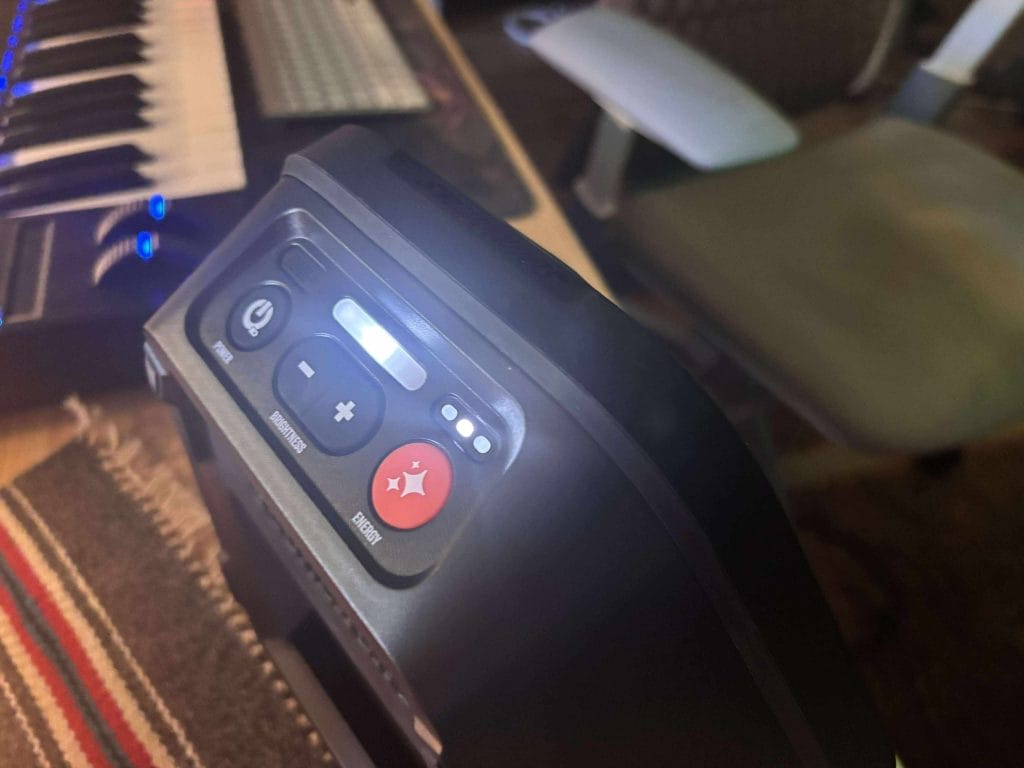
Battery performance was better than I expected. At maximum brightness in Rave mode, I got around 13 hours of runtime. At medium brightness in Dance mode, it lasted about 10 hours. For most real-world use, that’s enough to cover an entire event.
Charging happens through USB-C with 30W fast charging. A full recharge takes about two hours, which is convenient if you’re using it frequently. My main frustration is the lack of an included charging brick. At this price, that feels like a basic inclusion.
The battery is built-in, which keeps the unit compact and efficient. You can’t swap it out like the removable batteries on SOUNDBOKS speakers, but for this type of product, I actually prefer the built-in design. It simplifies things, reduces size, and makes it feel like a truly portable unit. For those who want extended runtime, you can connect it to a SOUNDBOKS battery pack, which is a clever workaround for bigger events.
Overall, the battery life is long enough for house parties, DJ gigs, or backyard gatherings. Unless you’re running multi-day festivals, you won’t hit the limits.
Day-to-Day Use Cases
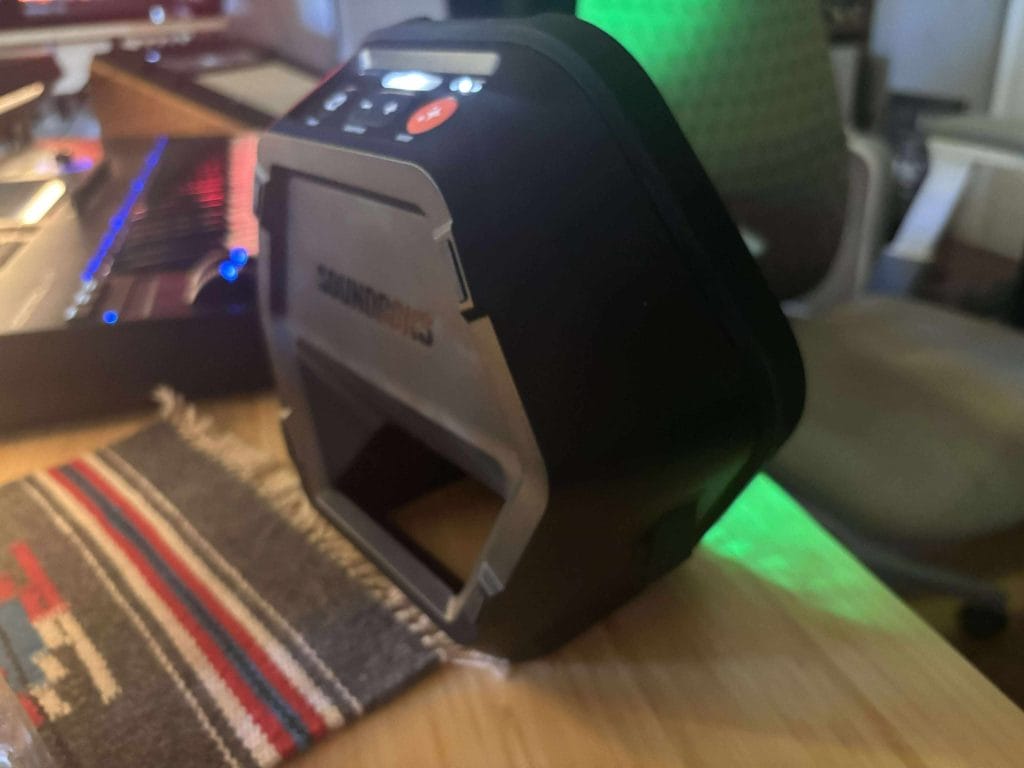
This is where the Lightboks shines. At a small family gathering, Chill mode with warm tones added atmosphere without overpowering conversation. At a kids’ party, my kids loved watching the lights react to their music — it kept them entertained without me needing to manage anything. During a DJ session, it gave me a plug-and-play solution that made the setup feel professional without cables or stands.
Indoors, one unit is usually enough. Outdoors, I recommend at least two, ideally three, to really fill the space. With multiple units linked together, the scalability becomes clear. The fact that I could move them around easily made it practical for different setups. One night I used it in the living room, the next day in the backyard, and the portability made it a smooth process.
I also appreciated the flexibility in placement. The hexagonal shape lets it stand in different orientations, upright or angled, depending on how I wanted the light directed. It added variety without needing additional stands or accessories.
The bottom line is that I kept finding new excuses to use it. It’s fun, versatile, and surprisingly practical outside of just “party mode.”
Strengths Compared to Alternatives
I’ve used plenty of cheaper LED lights, and the Lightboks stands apart in build quality, brightness, and ease of use. Most consumer party lights feel flimsy and lack polish in color mixing. The Lightboks feels premium in comparison.
It’s also much simpler than professional DJ lighting rigs. There are no wires, no DMX controllers, and no setup headaches. That makes it accessible to anyone who wants good lighting without the learning curve. For Soundboks owners, the integration with the ecosystem makes it even more appealing. Having your audio and lights in sync through the same app keeps everything streamlined.
Compared to standalone lighting systems, the portability is another strength. This is something you can carry under one arm and set up in minutes, which isn’t the case with most professional rigs.
Areas for Improvement
The biggest limitation is performance outdoors in daylight. Once the sun is up, even the brightest LEDs lose impact. At night, it’s incredible, but this won’t transform a space during the day.
Customization could also be expanded. While the presets and palettes are thoughtfully designed, I’d like to see full manual control of RGBW values in future updates. That would give users more flexibility to fine-tune colors for specific events.
The price is another factor. At $299, it sits in a premium category. For people who rarely host parties, it may feel like overkill. But for those who throw events regularly or already own a Soundboks speaker, the investment makes sense.
Lastly, I’d love to see a plain white mode added. Sometimes you want neutral lighting without color, and it’s something that would make the Lightboks more versatile in different settings.
Pricing and Value
At $299 per unit, the Lightboks isn’t cheap. Buying multiples adds up quickly, though bundle discounts soften the blow slightly. When you consider what you’re getting — rugged build, IP65 weather resistance, premium brightness, and app integration — the value becomes clearer.
This isn’t competing with $40 Amazon party lights. It’s a product in a different league, both in performance and durability. For DJs, frequent party hosts, or anyone invested in the Soundboks ecosystem, the price is fair for the quality delivered.
The real magic happens when you scale it. One unit is enough for small rooms, but two or three linked together transform larger spaces into something genuinely impressive. For me, the value multiplies as you add more units, since the scalability is one of its strongest selling points.
Conclusion
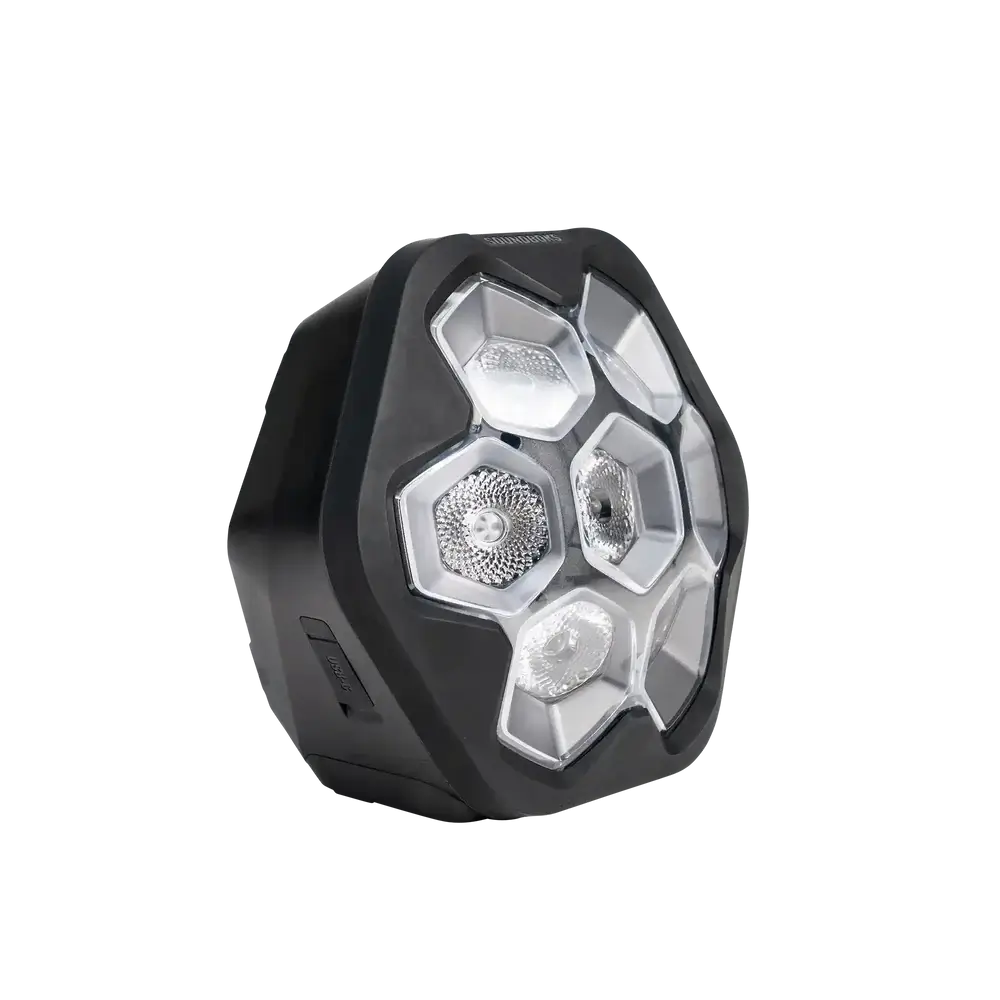
After weeks of testing, the Lightboks proved itself as one of the most polished portable lighting products I’ve used. The rugged build, IP65 weatherproofing, and simple controls make it practical in real-world party environments. The app integration and TeamUP connectivity scale it from a single-room accessory into a full backyard light show.
It isn’t flawless. Brightness struggles outdoors during the day, customization is limited to presets, and the lack of a charging brick feels like a miss at this price. But those shortcomings don’t overshadow how effective it is at what it’s built to do.
For Soundboks owners, it feels like the natural companion to their speakers. For anyone else, it’s still versatile enough to use with any sound source, and its simplicity makes it accessible even to people with zero technical background. If you host parties regularly, indoors or outdoors, this is one of the best lighting upgrades you can make.
At $299, the Lightboks isn’t for everyone. But for those who want a reliable, rugged, and powerful party light that works without effort, it earns its place in the kit. For me, it went from being a curiosity to something I don’t want to throw a party without.
The post Is the SOUNDBOKS Lightboks Worth $299? Here’s My Full Review appeared first on Magnetic Magazine.



